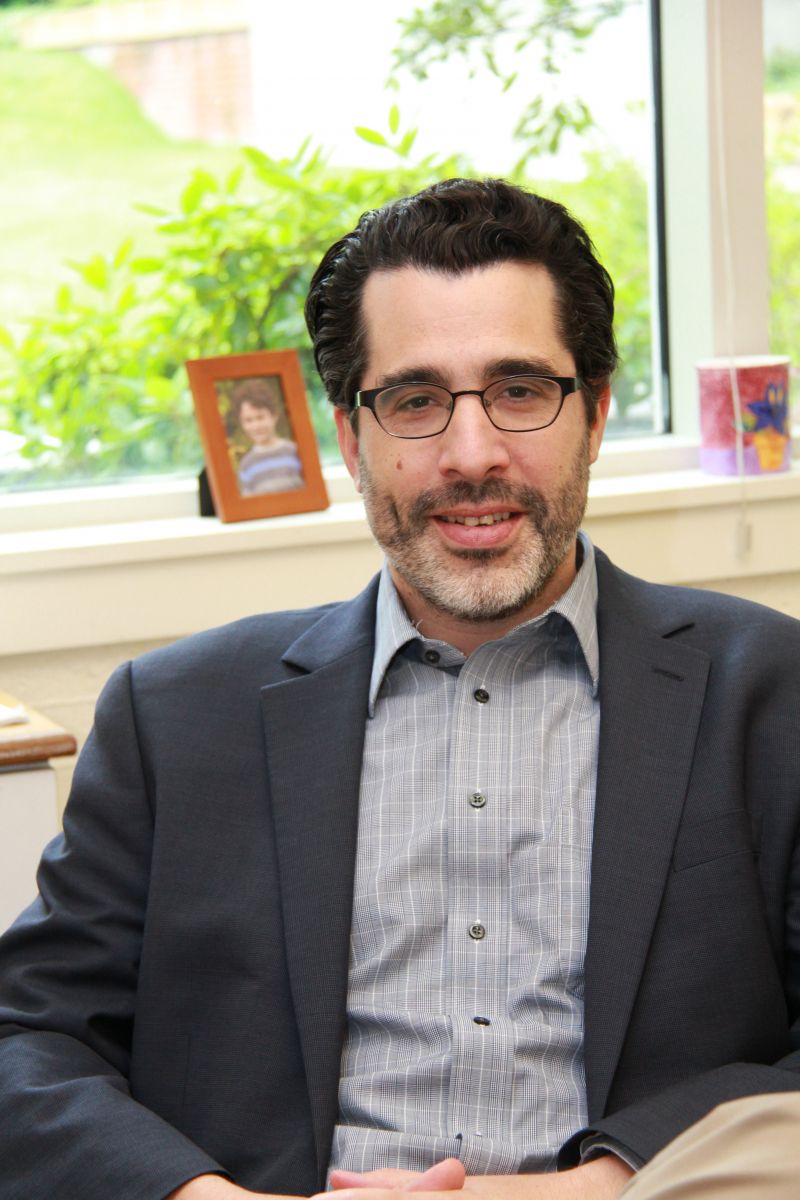You have /5 articles left.
Sign up for a free account or log in.

National University
As reported in Inside Higher Ed, National University is working to create a personalized education platform that combines three of the buzziest innovations in higher education -- adaptive learning, competency-based learning and predictive analytics for student retention.
The California-based nonprofit university is spending $20 million on the four-year project, with a goal of using the new platform in 20 general-education courses by next year. If successful, the university said, the approach could apply to a broader swath of academic programs. National also is exploring other emerging forms of personalized learning, and said it will make its research publicly available.
This large university appears to be going all out for personalized learning, so "Inside Digital Learning" is curious what National University’s initiative means for higher education. We posed these questions to experts: Can National’s endeavor succeed? Will other institutions follow National’s lead? What does the future hold for personalized learning?
 David Kuntz, principal adviser to the CEO, adaptive learning, ACT
David Kuntz, principal adviser to the CEO, adaptive learning, ACT
National University has joined the growing number of colleges and universities that are actively exploring using adaptive learning to improve their students’ learning experiences. This is a trend in higher education. Last year, for example, the Association of Public and Land-grant Universities announced that its Personalized Learning Consortium would support significant explorations into the use of various personalized learning solutions at seven major institutions, including, among others, one of the recognized pioneers in supporting such solutions, Arizona State University.
Terms like “adaptive learning,” “competency-based education” and “learning analytics” are often used today as catch-all descriptions, covering not only myriad different approaches to teaching and learning, but also myriad tools to support them. As a consequence, it can be easy to dismiss the underlying innovations and applications, or to conflate the different approaches and techniques. But these are distinct, and complementary, approaches.
In a nutshell, adaptive learning is a way to deliver a fine-grained personalized learning experience to a student, based on data that student produces while learning and practicing, that seeks to maximize the effectiveness of each learning opportunity. Competency-based education is an approach that seeks to ensure that each student actually masters the concepts, skills and knowledge they are expected to learn, gaining all of the value, rather than merely some, of each course of study. Learning analytics are a tool that can be used by students, faculty and administrators to better understand, among other things, which students are progressing, and which are at risk, early enough to do something about it.
At ACT we believe that, when grounded by research and psychometric expertise, and based on a deep understanding of students, educators and the educational environment, packaging all three of these components together can provide real value to students, parents, faculty and institutions. Adaptive learning, when combined with a mastery-based approach to education, helps ensure that students not only get the greatest lasting value from their education, but also that they accrue that value efficiently. And when coupled with analytics that can alert and inform teachers and student support centers of student needs in near real time, the combination can be extremely powerful, ensuring that each student receives the right instruction, the right intervention and the right new challenges, at the right time, to most effectively achieve their learning goals.
 Charla Long, executive director, Competency-Based Education Network
Charla Long, executive director, Competency-Based Education Network
The Precision Education Initiative at National University appears to be driven by a desire to remake higher education to be more genuinely learner centered. We at the Competency-Based Education Network believe the goal of prioritizing individual learners’ needs in the design and build of programs is admirable and should be supported.
Amid growing evidence that higher education in this country is failing too many of today’s “new traditional students,” many of whom are working full-time, have complicated lives and are financing their education without family support, the focus is beginning to shift from education to learning, from a college-centric view to a student-centered view of higher education’s purpose and promise. National University’s initiative seems to fit within this broader trend toward placing the focus where it belongs: on students.
At the same time, student-centered and learning-centered innovation of the kind sought by National and by institutions building CBE programs must be anchored in a first-order commitment to identifying and articulating shared standards of quality for new models. Without rigorous attention to quality assurance, which includes both standards for program design but also standards with respect to labor market outcomes for graduates, it is unlikely that the movement will reach its potential.
In addition to the need to attend rigorously to quality in design and implementation of programs, the complicated challenges facing institutions seeking to build integrated technology platforms to provide a seamless educational experience must be examined carefully. National’s aspiration to provide an integrated technology ecosystem that provides learners with the supports needed for success is admirable, and what National learns as it implements its system should be of wider interest to the field of institutions and solution providers working to tackle the systems challenges that limit the potential of so many innovations.
As confidence in the value of higher education and employer confidence in today’s graduates continues to decline, the stakes of innovation become higher and higher. C-BEN was born from a desire to create a community of practice dedicated to accelerating progress on the design and build of high-quality, scalable CBE models. Our institutions have prioritized collaboration on the creation of the Quality Principles and Standards for Competency-Based Education Programs precisely because we believe that the innovation sought by institutions like National University will achieve its aims only to the extent that we are able as a field to prioritize quality and tackle head-on the many challenges that prevent more widespread efforts to make learning transparent to students, taxpayers, employers and regulators. We wish National University the best in its efforts and will be watching, along with others, as it pursues its ambitious goals.
 Jacob Murray, faculty director for professional education, Boston University
Jacob Murray, faculty director for professional education, Boston University
The race is on for the latest, greatest tech-enabled, online, personalized, competency-based and adaptive/analytic postsecondary education model. Western Governors University, Southern New Hampshire University/College of the Americas, Capella University and National University (to name a few) are jockeying for prime position on the racetrack.
This race -- or pursuit -- is a worthwhile one. The current higher education system works for many, yet leaves just as many behind -- especially the growing number of nontraditional older, working students. Annually, just over 50 percent of U.S. college students complete school within six years of first enrolling. Thus, innovative approaches that offer tailored, flexible education pathways that best fit the learning profiles of students hold promise in improving postsecondary education. Any of these approaches should be closely evaluated to ensure they lead to both desired learning and completion outcomes.
Yet this race may fall short in that it’s taking place on the same oval racetrack. That is, many of these new approaches are still based on a traditional model that requires credit hours, general education course requirements, tri-semesters, faculty and curriculum approvals, and terminal degrees. Accreditors, government regulators and student aid requirements all ensure this model remains. Thus, further disruptive, tech-enabled strategies that could also improve postsecondary education success for many struggling students are often stifled.
For example, the technology and emerging learning strategies exist to create "student-of-one" or individualized programs. Rather than students enrolling in a set program with a prescribed list of courses and schedule, a student-of-one program would instead be built around an individual learner. He or she is the program; they complete a customized path that sequences personalized, adaptive modules -- both career-specific modules and general professional competency modules (communication, critical thinking, etc.) -- and projects that match their learning profile and lead toward a career goal and/or job placement. Students complete these modules and projects at their own pace, in between working and raising families if necessary. And they need not be isolated. They might be regularly connected (virtually or in person) with other students-of-one on similar career paths to share and review work.
More employers, from Google to Ernst & Young, care less about new hires holding traditional college degrees and are increasingly receptive to alternative pathways that lead to desired skill proficiency. Thus, for every $20 million initiative to create personalized, adaptive, credit-based college courses, it would be great to see a wholly alternative, non-credit-based pathway underway. Yet until student-of-one and similar solutions are recognized by government regulators and eligible for student aid, most postsecondary education innovation will remain focused on helping students complete the same oval racetrack.
Of course, there are legitimate concerns over poor-quality, mismanaged and fly-by-night education ventures that mistreat and defraud students. Thus, in exchange for approval and student aid eligibility, any/all alternative, non-credit-based solutions should be held accountable for learning, program completion and job placement outcomes similar to traditional higher education programs. But they first need a chance to enter the race and set an entirely new racecourse.
 Iris Palmer, senior policy analyst, New America Education Policy Program
Iris Palmer, senior policy analyst, New America Education Policy Program
National University is on the cutting edge of implementing predictive analytics and adaptive courseware. But these innovations are sweeping all of American higher education. And as they do, colleges need to think about how they will ensure that their implementation does not harm students. Some steps they can take to help ensure ethical implementation are:
- Come up with a vision and a plan. Colleges need to convene key staff, faculty and students to help make decisions on how these data tools will be used. These stakeholders should consider the purpose of the tools, how to guard against possible unintended consequences and how the school will measure success.
- Build a supportive infrastructure. National is lucky to be able to spend $20 million on the initiative, which should help create a solid infrastructure. But most colleges don’t have these resources. And doing this well takes more than money. Leaders need to communicate across the university about the importance of analytics and the work of the initiative. If this work is ever going to scale, colleges need universitywide buy-in. Colleges also need to create a robust change management process so they can learn from implementation and continue to improve.
- Ensure the proper use of data. Adaptive courseware and predictive analytics use and generate huge amounts of student data. Colleges need to be careful with how they interpret that data. Just because there is a probability of a particular student outcome does not mean that outcome will necessarily come to pass. Also, the data need to be as complete as possible. If it is incomplete, it can create a distorted picture. Colleges also need to focus on the security and privacy of the data, controlling who has access to it and how long the school maintains it.
- Use algorithms that avoid bias. Creating a complex algorithm can mask the biases in our systems. As colleges use algorithms to identify struggling students and customize learning, they need to ensure the algorithms do not have disparate impacts on disadvantaged groups. One way to do this is to test and be transparent about what goes into the models. This can be difficult when working with a vendor with a proprietary algorithm. A good vendor will at least share the factors and weights used in their algorithm so the college can determine if they will target some students more than others.
- Intervene with care. We know that students are easily discouraged by negative messages. Interventions should be carefully structured to avoid triggering these negative feelings. At the same time, colleges needs to train faculty and staff about implicit bias and the appropriate use of data. They also need to evaluate interventions and continue to improve both the interventions and the data tools themselves.
Ensuring these tools are used ethically is a big job. But National University and colleges across the country will need to address ethics to use these tools without negative impacts.
 Lou Pugliese, senior innovation fellow, EdPlus, Arizona State University
Lou Pugliese, senior innovation fellow, EdPlus, Arizona State University
National University’s foray into the currently murky chasm of adaptive learning is truly a courageous venture into technology-enabled personalized education.
Backed by an unprecedented $20 million investment, National is one of a handful of institutions applying adaptive systems to the individualized needs of a large, differentiated population, prospectively a prime antidote for the malaise of teaching to an increasingly growing population. Many institutions find themselves in a similar predicament, continuing to be challenged in addressing the unique teaching and learning requirements of the so-called nontraditional learner now the emergent new majority across many campuses nationwide.
This is an ambitious endeavor for National, even for just 20 general-education courses. At ASU, we have been involved in adaptive learning experimentation since 2011. Five years and 50,000 students later, we are still learning. In a world of early market uncertainty, there is only one absolute truth: this is an incredibly nascent market fraught with enormous potential, but light-years from maturity. Adaptive systems have the radical potential to shift to education in the service of students by providing a student-centric design based on individual student skill and outcome attainment. That said, early adopters face steep challenges in the instructional design and implementation of adaptive applications. I’ve written extensively about the promise and perils of the enormous potential of adaptive learning in this recent Educause article.
Perhaps one of the most daunting challenges our industry faces is that early private-sector applications are due to the “one-off” design of these early adaptive systems. Few, if any, have faculty-oriented authoring tools that force institutions to relinquish control of instructional design to the vendor supplying the platform. This removes faculty from the teaching and learning process, relegating them to a sideline approval role. It’s one challenge to develop implement adaptive systems but quite another to apply adaptive systems to adaptive teaching. Personalization also introduces new challenges in the teaching practice itself. Individualized student learning paths at variable pace have advantages, most importantly because it allows teaching and remediation to apply to students with the most need. However, faculty are accustomed to all students in the same online course progressing at the same pace. Altering an instructional strategy to these new capabilities requires significant periods of trial and error.
Finally, in order for adaptive systems to be scalable and effective in fulfilling their promise, we need to get the science right. The learning science techniques for establishing true personalization have only recently begun to emerge, but the learning science is not well understood, leaving academic outcome benefits to conjecture.
With the seemingly overwhelming challenges in this early market, I applaud National’s bold decisions in embracing this promising innovation and putting substantive backing behind it. However experimental in form and function, we need to invest in broad-based experimentation of promising new innovations in order to transform our current higher education landscape.








